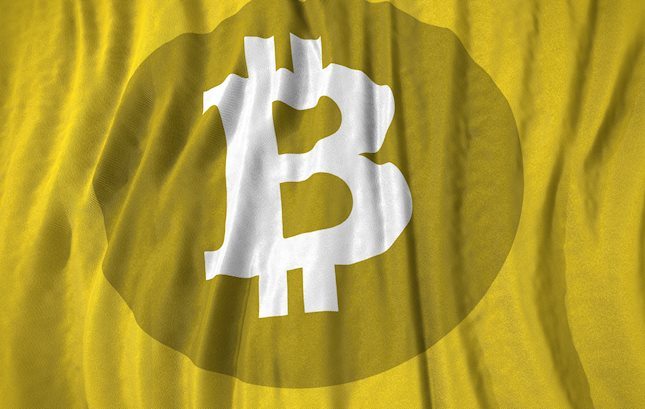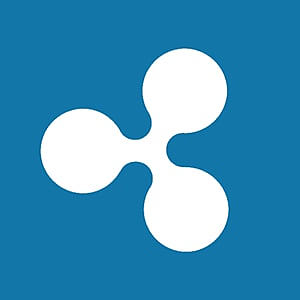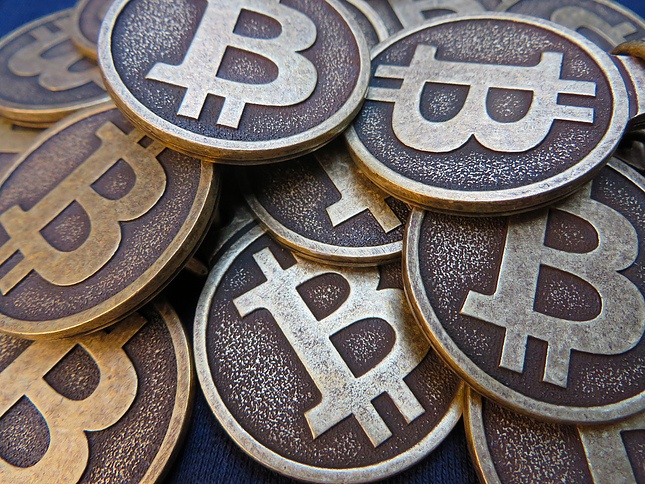Businesses face several problems when storing data on-premises. There are steep technical and cost issues in scaling infrastructure up and down, and maintaining storage area networks is a challenge. One also has to deal with complex problems in data compatibility and security.
These challenges have led to the emergence of a cloud storage model that delivers scalability, agility, security, cost savings and simplicity. Fortune Business Insights expects the global cloud storage market to grow from $83.41 billion in 2022 to $376.37 billion by 2029.
Cloud storage enables users to save data at an off-site location through the public internet or dedicated private network connection. Conventionally, cloud storage solutions, such as Dropbox, Sync and Google Drive, use centralized cloud providers such as Amazon Web Services and Azure to store their data. Dropbox is a cloud-based file storage and collaboration platform that enables users to store, access and share files from anywhere, on any device.
With Sync, users can easily share files with others and collaborate on projects, even in real-time. The solution also provides advanced security features, such as end-to-end encryption and two-factor authentication, to protect sensitive information.
Google Drive is a file storage and synchronization service developed by Google that allows users to store and access their files, including documents, photos and videos, from any device with an internet connection.
Centralized solutions, however, have a major demerit. Having data stored at a central location gives enormous powers to one’s host, such as disclosure of data to third parties without consent and loss of data through hardware or network failure and cyberattacks.
Decentralized storage has emerged as a viable alternative to centralized options. Powered by blockchain technology, decentralized storage applications are turning out to be quite useful in an age when business operations are hinged on efficiency in handling data.
This article discusses what decentralized storage is and how it works. It also compares centralized and decentralized storage solutions in brief.
What is decentralized storage?
Decentralized storage is a type of storage solution that is based on a blockchain-based decentralized network, rather than relying on a single centralized entity. Data is saved on various nodes in a decentralized network rather than on a single server under the control of a single authority. This increases security and reliability by ensuring that the data is disseminated and safeguarded against errors and other potential risks.
Decentralized storage options also give consumers complete ownership and control over their data, rather than having to rely on a third party to manage and keep it. InterPlanetary File System (IPFS) and StorX are a couple of instances of decentralized storage systems.
IPFS is a decentralized, peer-to-peer file storage network that allows users to store, access and share files in a distributed manner, providing increased security, privacy and scalability. StorX enables anyone to securely encrypt, fragment and distribute critical data across multiple hosting nodes globally. Every file stored on StorX is split into multiple components before encryption and stored within independent storage nodes run by different operators located across the world.
Structured as a group of autonomous storage networks, StorX has no single operator holding complete access to the data belonging to a single user. As different operators hold fragments of data, there is no single holder wielding disproportionate influence, boosting data security. The network has built-in privacy protection for personal data belonging to specific users.
How does decentralized storage work?
Let’s continue with the example of StorX to gain insight into the working of a decentralized solution. One uses a login and password to upload a file to StorX’s network. Under the hood, the network generates a unique private key, encrypts the file, segregates the file into multiple fragments, and distributes it among independent nodes globally.
To ensure redundancy, the network creates multiple copies of these fragments, which ensures that in case a node is unavailable, the data fragments can be retrieved from alternative nodes. Whenever a user wants to retrieve the files, they use the login credentials to activate the private keys and background to reassemble the file and get access.
The network uses native SRX tokens as a medium of payment. Data centers with excess storage capacity operate the storage nodes. At regular intervals, they provide proof of storage to the platform.
Storage node reputation mechanism
To ascertain high-quality standards in storage nodes, StorX has a storage node reputation mechanism, an artificial intelligence-driven app, that keeps a regular quality check on all storage nodes. The mechanism assigns a quality score to each node based on the quality check performed.
Factors that influence the node reputation mechanism are node efficiency, its quality and location, and SRX staking amount. SRX is the native currency of StorX and powers the ecosystem. Regarding efficiency, the mechanism takes into account updated security parameters and server OS patches. The system also ensures the nodes aren’t concentrated in the same internet service provider or location.
Decentralized vs. centralized storage solutions
The design of decentralized storage platforms makes them a better bet than centralized systems. Using StorX as an example, let us get insight into their performance:
Storage of critical data
While centralized storage systems are prone to spoofing and restrictions, a decentralized network comprising more than 4,000 nodes globally makes StorX capable of storing critical data. All nodes in StorX are enterprise-grade, which means it is server-level hardware residing in a minimum tier 3 data center. The quality of the hardware manifests itself in the quality of the storage.
StorX restricts the mapping of publicly accessible data. Only the owner of the data or the people granted access can retrieve the data stored in their account via the private keys.
Use of encryption
Some centralized storage systems have tried to compete with decentralized storage systems by creating hybrid decentralized solutions that lack core elements of decentralization — i.e., transferring the decision-making to a dispersed network.
StorX, on the other hand, uses both content and transport encryption, which makes stored data more secure. StorX offers decentralized cloud storage that deploys military-grade encryption AES-256 and fragmentation techniques, ensuring data security as no single node owns complete data.
Advanced cloud storage
In conventional cloud storage, data is stored on a single file server hosted in one geographic location. Decentralized data, however, fragments the file into multiple pieces that are distributed to various locations across the world. As decentralized storage has no single point of failure, it has the capacity to withstand multiple simultaneous outages or even censorship.
StorX rolls out a mechanism that combines the best of the two. While the file is distributed to different nodes, these are all server-level hardware and not just any computer. The users get advanced cloud storage, which is a blend of traditional cloud and decentralized data structure.
Enhanced speed
Unlike conventional ways of storage where a voluminous amount of data is stored on a single source, decentralized storage has multiple nodes for storing data. In centralized systems, the speed hinges on multiple factors, such as connectivity, bandwidth and the number of processors running on the server. However, in a decentralized system like StorX, the system queries the network and fetches data from the closest nodes, resulting in optimal data retrieval speeds.
The future of the decentralized storage systems
Decentralized storage systems may grow in popularity in the future, as they offer numerous benefits over traditional centralized storage systems, such as increased security, data privacy and improved reliability. They also have the potential to reduce costs and increase accessibility to storage resources.
Related: The Internet of Things (IoT): A beginner’s guide
In addition, decentralized storage systems are anticipated to improve in scalability, security and usability in the future, making them more appealing to a larger spectrum of users, including individuals and organizations. The demand for decentralized storage solutions is anticipated to rise with the expansion of the Internet of Things devices and other decentralized systems, spurring additional innovation and research in this area.
Information on these pages contains forward-looking statements that involve risks and uncertainties. Markets and instruments profiled on this page are for informational purposes only and should not in any way come across as a recommendation to buy or sell in these assets. You should do your own thorough research before making any investment decisions. FXStreet does not in any way guarantee that this information is free from mistakes, errors, or material misstatements. It also does not guarantee that this information is of a timely nature. Investing in Open Markets involves a great deal of risk, including the loss of all or a portion of your investment, as well as emotional distress. All risks, losses and costs associated with investing, including total loss of principal, are your responsibility. The views and opinions expressed in this article are those of the authors and do not necessarily reflect the official policy or position of FXStreet nor its advertisers.
Recommended Content
Editors’ Picks

Bitcoin Weekly Forecast: Slow but positive start
Bitcoin edges slightly lower, trading around $96,500 on Friday after an over 2.5% recovery this week, with historical data showing modest average January returns of 3.35%. On-chain metrics suggest the bull market remains intact, indicating a cooling-off phase rather than a cycle peak.

Stellar bulls aim for double-digit rally ahead
Stellar extends its gains, trading above $0.45 on Friday after rallying more than 32% this week. On-chain data indicates further rally as XLM’s Open Interest and Total Value Locked rise. Additionally, the technical outlook suggests a rally continuation projection of further 40% gains.

BTC, ETH and XRP eyes for a rally
Bitcoin’s price finds support around its key level, while Ethereum’s price is approaching its key resistance level; a firm close above it would signal a bullish trend. Ripple price trades within a symmetrical triangle on Friday, a breakout from which could signal a rally ahead.

Could XRP surge to new highs in January 2025? First two days of trading suggest an upside bias
Ripple's XRP is up 7% on Thursday, extending its rally that began during the New Year's Day celebration. If long-term holders (LTH) continue their recent accumulation, XRP could overcome the $2.9 resistance level and aim for a new all-time high.

Bitcoin: 2025 outlook brightens on expectations of US pro-crypto policy
Bitcoin price has surged more than 140% in 2024, reaching the $100K milestone in early December. The rally was driven by the launch of Bitcoin Spot ETFs in January and the reduced supply following the fourth halving event in April.

Best Forex Brokers with Low Spreads
VERIFIED Low spreads are crucial for reducing trading costs. Explore top Forex brokers offering competitive spreads and high leverage. Compare options for EUR/USD, GBP/USD, USD/JPY, and Gold.
